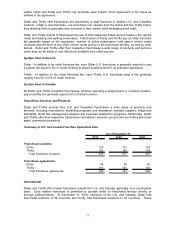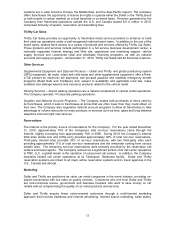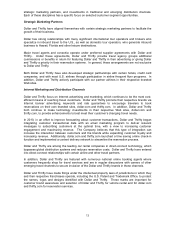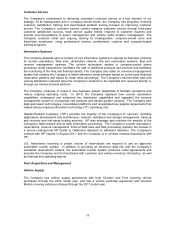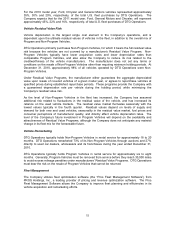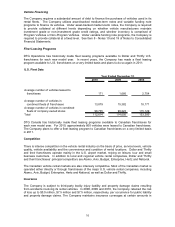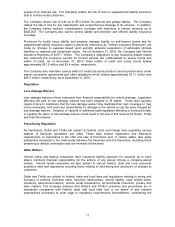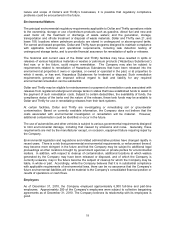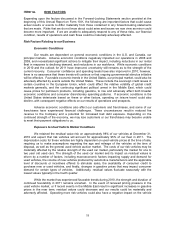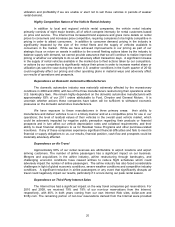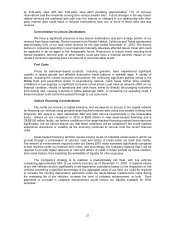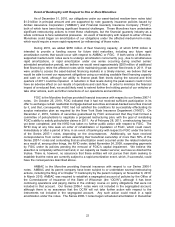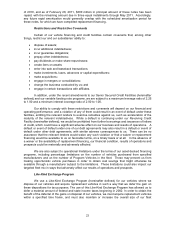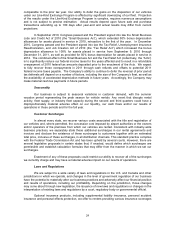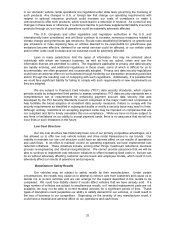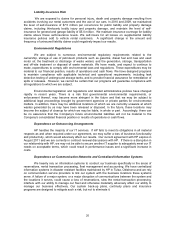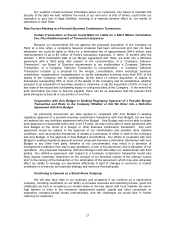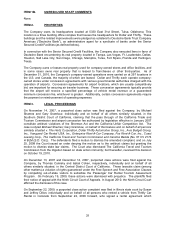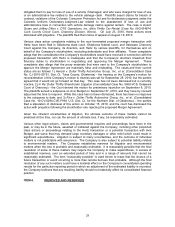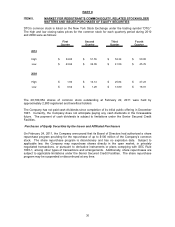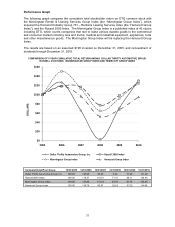Thrifty Car Rental 2010 Annual Report Download - page 22
Download and view the complete annual report
Please find page 22 of the 2010 Thrifty Car Rental annual report below. You can navigate through the pages in the report by either clicking on the pages listed below, or by using the keyword search tool below to find specific information within the annual report.by third-party sites with two third-party sites each providing approximately 11% of non-tour
reservations and the remainder coming from various smaller sites. Future changes in the way travel-
related services are marketed and sold over the Internet or changes in our relationship with third-
party Internet sites could result in reduced reservations from one or more of these sites and less
revenue.
Concentration in Leisure Destinations
We have a significant presence in key leisure destinations and earn a large portion of our
revenue from these markets. Rental revenue from Florida, Hawaii, California and Texas represented
approximately 60% of our total rental revenue for the year ended December 31, 2010. The severe
decline in consumer spending in recent periods materially adversely affected leisure travel and could
be expected to do so again in the foreseeable future. Reductions in leisure travel resulting from
natural disasters, terrorist acts, or other factors could also have a material adverse impact on our
results if consumer spending does not rebound to more favorable levels.
Fuel Costs
Prices for petroleum-based products, including gasoline, have experienced significant
volatility in recent periods and affected automotive travel patterns in material ways. A variety of
factors, including the current economic environment, the continuing significant political unrest in the
Middle East and geopolitical unrest in oil-producing nations, could cause further price volatility.
Limitations in fuel supplies or significant increases in fuel prices could have an adverse effect on our
financial condition, results of operations and cash flows, either by directly discouraging customers
from renting cars, causing a decline in airline passenger traffic, or increasing our operating costs, if
these increased costs cannot be passed through to our customers.
Vehicle Financing Considerations
The rental car industry is capital intensive, and we depend on access to the capital markets
for financing our vehicles using primarily asset-backed medium-term notes and variable funding note
programs. We expect to have substantial debt and debt service requirements in the foreseeable
future. Based on our completion in 2010 of $950 million in new asset-backed financing and a
CAD$150 million facility, we believe conditions in the asset-backed financing markets have improved
significantly, but we cannot assure you that these conditions will be sustained if the credit markets
experience disruptions or volatility as the economy continues to recover from the recent financial
crisis.
Asset-backed financing facilities require varying levels of collateral enhancement, which we
provide through a combination of vehicles, cash and letters of credit under our bank loan facility.
The amount of enhancement required under our Series 2010 notes increased significantly compared
to that required under our medium-term notes, and accordingly, the Company expects that it will be
required to provide higher amounts of cash and letters of credit in future periods as those medium-
term notes mature, thus impacting the availability of liquidity for other purposes.
The Company’s strategy is to maintain a predominately risk fleet, with risk vehicles
comprising approximately 98% of our vehicle inventory as of December 31, 2010. If residual values
of our risk vehicles decline significantly or we experience cumulative losses on the disposition of risk
vehicles exceeding a specified percentage of the aggregate value of our fleet, we could be required
to increase the monthly depreciation payments under our asset-backed medium-term notes during
the remaining life of the vehicles, increase the level of collateral enhancement, or both. Such
payments or increase in collateral enhancement would reduce our liquidity available for other
purposes.
21


